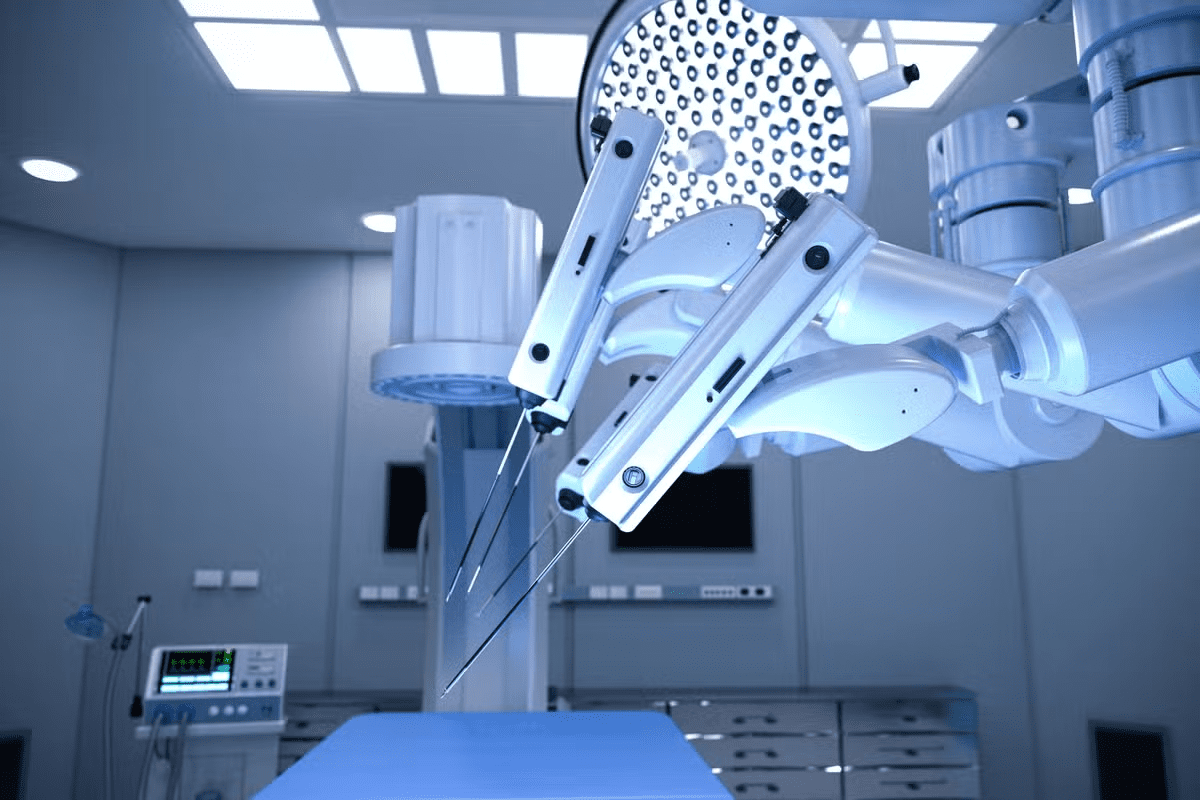Last Updated on November 27, 2025 by Bilal Hasdemir

CAR T-cell therapy is a new way to fight cancer. It uses a patient’s own immune system to attack cancer cells. This is done through chimeric antigen receptor technology, which turns T cells into strong cancer fighters.
This therapy is changing cancer care. It brings hope to those with tough blood cancers. It’s shown to be very effective, mainly in treating leukemia.
Looking into CAR T-cell therapy, we see it’s not just new. It’s also well-researched and approved by the FDA. This shows it’s safe and works well.
Key Takeaways
- CAR T-cell therapy uses a patient’s own T cells to fight cancer.
- Chimeric antigen receptor technology enables targeted cancer treatment.
- This therapy has shown significant promise in treating leukemia and other blood cancers.
- FDA approvals underscore the therapy’s safety and efficacy.
- CAR T-cell therapy represents a new era in cancer care, bringing hope to patients with tough diagnoses.
The Evolution of Cancer Immunotherapy
In recent years, oncology has seen a big change towards immunotherapy. This method uses the body’s immune system to fight cancer. It’s a big change from old treatments like surgery, chemotherapy, or radiation.
From Traditional Treatments to Cellular Therapies
Old cancer treatments have their limits. Chemotherapy and radiation can harm healthy cells, causing bad side effects. They also can’t always tell cancer cells from healthy ones, leading to damage.
On the other hand, CAR T-cell therapy is a new way to fight cancer. It uses the patient’s own immune cells to target cancer. This is a more precise way to fight cancer.
CAR T-cell technology is a big step forward. It takes T cells from the blood, changes them to find and kill cancer cells, and then puts them back in the patient. This immune cell therapy has worked well for some blood cancers, giving hope to those who’ve tried other treatments.
The Emergence of CAR-T Therapies
CAR-T therapies have changed cancer immunotherapy a lot. They target cancer cells but not healthy tissue. This could change how we treat many cancers.
As we keep improving cancer immunotherapy, car t cell technology will be key. We’re seeing new ways to use immune cell therapy. This could help more people with cancer in the future.
What Are CAR T Cells?
CAR T cells are a new way to fight cancer by using the body’s immune system. They start with the patient’s own T cells, a key part of the immune system. These T cells are white blood cells that help fight off infections.
T Cells: The Body’s Natural Defenders
T cells are essential components of the immune system. They can tell the difference between the body’s cells and harmful ones. They grow in the thymus and come in different types, like cytotoxic T cells. These cells can kill infected cells or start the immune response.
In cancer, T cells can spot and attack cancer cells. But, cancer cells can hide from the immune system. CAR T-cell therapy helps T cells fight cancer better.
Chimeric Antigen Receptor Technology
Chimeric antigen receptor (CAR) technology changes T cells to better find cancer cells. CARs are synthetic receptors made to target specific cancer cell markers. When a CAR T cell finds a cancer cell, it attacks it.
To make CAR T cells, several steps are needed. First, T cells are taken from the patient. Then, they are genetically modified with CARs. Next, the cells are grown and given back to the patient. This makes CAR T cells very good at finding and killing cancer cells.
| Key Components | Function |
|---|---|
| T Cells | Immune cells that can be engineered to fight cancer |
| Chimeric Antigen Receptor (CAR) | A synthetic receptor that allows T cells to target specific cancer antigens |
| CAR T-Cell Therapy | A form of immunotherapy that uses genetically modified T cells to combat cancer |
Understanding T cells and CAR technology shows how CAR T-cell therapy can help fight cancer. It’s very promising, even for cancers that don’t respond to other treatments.
How Does CAR T Work? The Mechanism Explained
CAR T-cell therapy is complex, involving several steps. It recognizes cancer cells, kills them directly, and boosts the immune system. This makes it a strong treatment for some blood cancers.
Recognition of Cancer Antigens
The therapy starts with modifying T cells to find cancer cells. For leukemia, they target the CD19 antigen on B cells.
Targeting Cancer Cells: CAR T cells are very good at finding cancer cells. They can kill cancer cells without harming normal cells. This is because they only target specific antigens.
Direct Cytolytic Mechanisms
When CAR T cells find cancer cells, they start killing them. They release toxins and activate cell death in cancer cells.
- CAR T cells release cytolytic granules containing perforin and granzymes, which induce apoptosis in target cells.
- The direct killing of cancer cells by CAR T cells reduces tumor burden and can lead to complete remission in some patients.
Cytokine Release and Immune Amplification
After killing cancer cells, CAR T cells release cytokines. This boosts the immune system. But, it can also cause a systemic reaction that needs medical care.
| Cytokine | Role in Immune Response |
|---|---|
| IL-2 | Enhances T cell proliferation and activation |
| IFN-γ | Activates immune cells and induces anti-tumor effects |
| IL-6 | Mediates inflammation and contributes to CRS |
Understanding CAR T-cell therapy shows its power against cancer. As research grows, it could help more people fight cancer.
The CAR T-Cell Manufacturing Process
CAR T-cell therapy turns a patient’s T cells into fighters against cancer. This complex process has several key steps. Each step is vital for the treatment’s safety and success.
Collection of Patient’s T Cells
The first step is collecting the patient’s T cells through leukapheresis. This method separates white blood cells from other blood parts. The T cells then go to a lab for more work.
Genetic Modification with Chimeric Antigen Receptors
Next, the T cells get a genetic makeover. They are given chimeric antigen receptors (CARs) to find and attack cancer cells. Viral vectors carry the CAR gene into the T cells.
Expansion and Quality Control
After getting the CAR, the T cells grow in number. This can take days to weeks. They are checked to see if they can kill cancer cells well. Quality checks ensure the T cells are safe and work well.
Some important quality checks include:
- Viability and purity of the CAR T cells
- Expression of the CAR on the T cell surface
- Potency of the CAR T cells in killing target cells
- Absence of microbial contamination
| Quality Control Measure | Description | Importance |
|---|---|---|
| Viability and Purity | Assessing the health and purity of CAR T cells | Ensures that the infused cells are healthy and functional |
| CAR Expression | Verifying the presence of CAR on T cell surface | Critical for the T cells to recognize cancer cells |
| Potency Testing | Evaluating the ability of CAR T cells to kill target cells | Confirms the efficacy of the CAR T-cell therapy |
Reinfusion into the Patient
After quality checks, the CAR T cells are sent back to the patient. Before reinfusion, the patient gets chemotherapy to clear the way for the CAR T cells.
The CAR T-cell manufacturing process shows great progress in cellular therapy and genetic engineering. It highlights the promise of CAR T-cell therapy in changing cancer treatment.
CAR T Therapy FDA Approval: A Timeline
CAR T-cell therapy has seen huge progress, leading to its first FDA approvals in 2017. This was a big step forward in treating certain blood cancers.
First Approvals in 2017
In 2017, the FDA approved the first CAR T-cell therapies, tisagenlecleucel (Kymriah) and axicabtagene ciloleucel (Yescarta). Tisagenlecleucel was for kids and young adults with a tough form of leukemia. Axicabtagene ciloleucel was for adults with a certain type of lymphoma.
These approvals came after thorough clinical trials showed CAR T-cell therapies were safe and worked well. They brought new hope to patients who had tried other treatments without success.
Subsequent Approvals and Expanded Indications
After the first approvals, the FDA kept approving new CAR T-cell therapies and broadening their uses. In 2020, lisocabtagene maraleucel (Breyanzi) was approved for adults with a tough form of lymphoma. Also, tisagenlecleucel’s use was expanded to include adults with a specific type of lymphoma.
These updates show more evidence of CAR T-cell therapies’ safety and effectiveness. They also show ongoing efforts to better treat blood cancers.
Current FDA-Approved CAR T Cell Therapies
Today, several CAR T-cell therapies are FDA-approved for different conditions. Here’s a table of the current FDA-approved CAR T-cell therapies:
| Therapy | Indication | Approval Year |
|---|---|---|
| Tisagenlecleucel (Kymriah) | Children and young adults with relapsed or refractory B-cell precursor ALL; Adults with relapsed or refractory diffuse large B-cell lymphoma | 2017, 2018 |
| Axicabtagene ciloleucel (Yescarta) | Adult patients with relapsed or refractory large B-cell lymphoma | 2017 |
| Lisocabtagene maraleucel (Breyanzi) | Adults with relapsed or refractory large B-cell lymphoma | 2020 |
We keep an eye on CAR T-cell therapy’s progress and FDA approvals. This field is changing fast. The approval of these therapies shows big strides in treating blood cancers and gives patients new options.
CAR T-Cell Therapy for Blood Cancers
CAR T-cell therapy is a new hope for blood cancer patients. It’s changing how we treat these diseases. This therapy is a big step forward in immunotherapy.
It works by making a patient’s T cells attack cancer cells. This is helping treat leukemia, lymphoma, and multiple myeloma.
CAR T Cell Therapy for Leukemia
Leukemia, a blood and bone marrow cancer, is getting better with CAR T-cell therapy. Clinical trials show high success rates, mainly in relapsed or refractory acute lymphoblastic leukemia (ALL).
- Many patients achieve complete remission.
- It’s been approved for some leukemia types.
- More research is looking into other leukemia types.
Applications in Lymphoma
Lymphoma, a blood cancer, is also seeing benefits from CAR T-cell therapy. Patients with relapsed or refractory lymphoma are showing good results.
- It targets specific lymphoma cells.
- It works well for those who didn’t respond to other treatments.
- More research is looking into different lymphoma types.
Multiple Myeloma Treatment
Multiple myeloma, a plasma cell cancer, is being studied for CAR T-cell therapy. Early results are encouraging.
- It’s being tested for its effectiveness in multiple myeloma.
- BCMA is a key target for CAR T cells in multiple myeloma.
- Trials are checking its safety and how well it works.
In summary, CAR T-cell therapy is changing the game for blood cancer treatments. Leukemia, lymphoma, and multiple myeloma are seeing improvements. As research grows, we expect even better results for patients.
Response Rates and Efficacy of T Cell Drugs
It’s important to know how well CAR T-cell therapy works for cancer. This treatment is showing great promise, mainly for blood cancers.
Complete Remission Rates in Different Cancers
Studies show CAR T-cell therapy works differently for each cancer. For some blood cancers, like leukemia and lymphoma, it’s very promising.
- In acute lymphoblastic leukemia (ALL), complete remission rates have been reported to be as high as 90% in some studies.
- For diffuse large B-cell lymphoma (DLBCL), complete remission rates range from 40% to 60%.
- In multiple myeloma, the response rates have been encouraging, with some studies indicating a significant reduction in tumor burden.
Duration of Response
How long a response lasts is key to judging CAR T-cell therapy’s success. Studies show that those who fully respond often stay that way for a long time.
Key findings include:
- Some patients remain in remission for several years after a single infusion of CAR T cells.
- The persistence of CAR T cells in the body contributes to the durability of the response.
- Ongoing research aims to understand the factors that influence the long-term efficacy of CAR T-cell therapy.
Factors Affecting Treatment Success
Many things can affect how well CAR T-cell therapy works. These include the cancer type, patient health, and the CAR T-cell product used.
Important considerations include:
- The presence of certain biomarkers can predict a better response to CAR T-cell therapy.
- Patient health and prior treatments can impact the efficacy and safety of CAR T-cell therapy.
- The design of the CAR T-cell product, including the target antigen and the construct design, plays a critical role in determining its effectiveness.
Understanding these factors helps doctors choose the right patients for CAR T-cell therapy. This makes treatment more effective.
Challenges and Side Effects of CAR Immunotherapy
CAR T-cell therapy is a new way to fight cancer. It has shown great results in treating some blood cancers. But, it can also cause serious side effects. We will look at the main challenges, like cytokine release syndrome, neurotoxicity, and B-cell aplasia. We will also talk about how to handle these issues.
Cytokine Release Syndrome
Cytokine release syndrome (CRS) is a serious side effect of CAR T-cell therapy. It happens when the T cells release a lot of cytokines into the blood. This can cause a big inflammatory response in the body. Symptoms can be mild or very severe, like fever, fatigue, and low blood pressure.
Managing CRS means keeping a close eye on patients. Doctors use tocilizumab, an anti-IL-6 receptor antibody, to lessen the inflammation.
Neurotoxicity
Neurotoxicity is another big problem with CAR T-cell therapy. It can cause confusion, memory loss, and even brain swelling. The exact reasons for this are being studied, but it’s thought to be due to cytokine release and inflammation.
To deal with neurotoxicity, it’s important to spot symptoms early. Doctors might use corticosteroids to reduce inflammation.
B-Cell Aplasia
B-cell aplasia happens when CAR T cells destroy B cells. This is good for treating B-cell cancers, but it can leave patients open to infections. It’s because their immune system is weakened.
To manage B-cell aplasia, doctors use supportive care. This includes giving immunoglobulins to prevent infections.
Management Strategies for Adverse Effects
It’s key to manage CAR T-cell therapy’s side effects to keep patients safe and treatment effective. Here are some ways:
- Monitoring: Watch patients closely for early signs of CRS and neurotoxicity.
- Supportive Care: Give patients hydration and nutrition to help them recover.
- Tocilizumab: Use tocilizumab to treat CRS.
- Corticosteroids: Give corticosteroids to help with CRS and neurotoxicity.
“The management of CAR T-cell therapy’s side effects is as important as the treatment itself. Doctors need to be quick and effective in dealing with these issues to get the best results for patients.”
CAR T Research: Beyond Blood Cancers
CAR T-cell therapy is growing, and researchers are looking to use it for more than just blood cancers. It has shown great success in treating some types of leukemia and lymphoma. Now, they want to see if it can help with solid tumors too.
Targeting Solid Tumors
Solid tumors are tough for CAR T-cell therapy because of their complex nature. Scientists are working on making CAR T-cells better at reaching and attacking these tumors. Early studies suggest that CAR T-cells might be able to target specific solid tumors like glioblastoma and ovarian cancer.
“The field is moving fast,” says a CAR T-cell expert. “Many clinical trials are underway to check if CAR T-cell therapy works for solid tumors.”
Next-Generation Chimeric Antigen Receptor T-Cells
New CAR T-cells are being developed to make the therapy more effective. These next-generation CARs are designed to be more specific and persistent, and to better fight the tumor’s defenses. They can recognize more than one antigen and have special molecules to boost their performance.
- Dual-targeting CAR T-cells to reduce antigen escape
- CAR T-cells engineered to secrete pro-inflammatory cytokines
- CAR T-cells with improved trafficking to tumor sites
Combination Therapies
Combining CAR T-cells with other treatments is another exciting area of research. This mix aims to create a stronger fight against cancer. Early results show that these combinations can lead to better outcomes for patients with advanced cancers.
The future of CAR T-cell therapy looks promising. With ongoing research, it could help treat a wider range of cancers, including tough solid tumors.
CAR T as a “Living Drug”: What Makes It Unique
CAR T-cell therapy is called a “living drug” because it can watch for cancer over time. This makes it different from other cancer treatments. It gives hope to people with certain blood cancers.
Persistence in the Body
One special thing about CAR T-cell therapy is how it stays in the body. After it’s given, CAR T cells keep growing and working for months or years. They keep finding and killing cancer cells, giving long-lasting help.
Memory Response and Long-term Surveillance
CAR T cells also remember cancer cells. This means they can find and fight them better if they come back. This memory is key for keeping cancer from coming back.
This ability to watch for cancer over time is a big plus of CAR T-cell therapy. It could lead to longer-lasting remissions and better results for patients.
Comparison with Conventional Cancer Treatments
Unlike treatments like chemo or radiation, CAR T-cell therapy is a living treatment. It can change and adapt to cancer’s growth. Its ability to stay active and remember cancer cells makes it a strong tool against some cancers.
In short, CAR T-cell therapy’s “living drug” nature is a big step forward in cancer treatment. With ongoing research, it will likely become even more important in fighting cancer.
Implementing CAR T Cell Technology in Clinical Settings
Using CAR T-cell therapy in hospitals needs a team effort. It’s about planning, teamwork, and knowing how the therapy works.
Care Requirements
A team of experts is key for CAR T-cell therapy to work. This team includes doctors, scientists, and support staff. Multidisciplinary care means patients get all-around treatment, from start to finish.
- Initial patient evaluation and selection
- Pre-treatment preparation and conditioning
- CAR T-cell infusion and monitoring
- Management of possible side effects
- Long-term follow-up care
Liv Hospital’s Approach to CAR T Treatment
Liv Hospital has a detailed CAR T-cell therapy program. It follows global standards in fighting cancer. Our program includes:
- Personalized treatment plans for each patient
- Advanced setup for making and giving CAR T-cells
- A team of experts for patient care and watching
- Following international rules for safety and success
We keep up with CAR T cell technology as it grows. Our team always learns and improves to help our patients.
Global Standards and Competitive Outcomes
Following global standards is key for top results in CAR T-cell therapy. This means sticking to set rules for who gets treated, how it’s given, and handling side effects. This way, we make sure our patients get the best care.
Our focus on multidisciplinary care and global standards helps us achieve great results. It makes a big difference in the lives of those getting CAR T-cell therapy.
Conclusion: The Transformative Impact of CAR T-Cell Therapy
We’ve seen how CAR T-cell therapy is changing cancer treatment. It uses the immune system to fight cancer, giving patients new hope. This therapy has shown great promise in treating different types of cancer.
The FDA’s approval of CAR T-cell therapies is a big step forward. It can target cancer cells directly, leading to high success rates in trials. This shows its power in fighting cancer.
As we keep researching CAR T-cell therapy, we’re seeing a big change in how we treat cancer. It has the power to greatly improve patient care. We’re dedicated to providing top-notch healthcare, supporting patients from around the world.
The future of cancer treatment looks bright, with CAR T-cell therapy leading the way. We think this therapy will keep making a big difference. It will help improve patient outcomes and change how we treat cancer.
FAQ
What is CAR T-cell therapy?
CAR T-cell therapy is a type of immunotherapy. It removes T cells from a patient’s blood. Then, it modifies them to attack cancer cells. After that, the T cells are put back into the body.
How does CAR T-cell therapy work?
This therapy uses chimeric antigen receptor technology. It changes T cells to recognize and attack cancer cells. This way, the T cells can target and kill these cells.
What types of cancer can CAR T-cell therapy treat?
It mainly treats blood cancers like leukemia, lymphoma, and multiple myeloma. Researchers are also exploring its use for solid tumors.
What are the side effects of CAR T-cell therapy?
Side effects include cytokine release syndrome, neurotoxicity, and B-cell aplasia. These can be managed with proper medical care and monitoring.
How is CAR T-cell therapy manufactured?
The process starts with collecting a patient’s T cells. Then, they are genetically modified with chimeric antigen receptors. The cells are expanded and checked for quality before being given back to the patient.
What is the significance of CAR T therapy FDA approval?
FDA approval means the treatment has been tested thoroughly. It’s deemed safe and effective for certain uses. This gives patients a new treatment option.
How effective is CAR T-cell therapy in treating blood cancers?
It has shown great success in treating blood cancers. Many patients experience complete remission and long-lasting responses.
What is the concept of CAR T as a “living drug”?
CAR T-cell therapy is called a “living drug” because the modified T cells stay in the body. They provide ongoing immune surveillance and protection against cancer.
What are the latest research trends in CAR T-cell therapy?
Research is focusing on using CAR T-cell therapy for solid tumors. It also includes developing next-generation CAR T cells and combining therapies to improve outcomes.
What are the requirements for implementing CAR T-cell therapy in clinical settings?
It needs a team of specialists, specific infrastructure, and adherence to global standards. This ensures safe and effective treatment.
How does CAR T-cell therapy compare to conventional cancer treatments?
CAR T-cell therapy is unique because it uses the immune system. It may offer more targeted and lasting responses than traditional treatments.
References
- PMC / NCBI. [Article Title]. Retrieved from https://pmc.ncbi.nlm.nih.gov/articles/PMC9256991/
- National Cancer Institute (NCI). CAR T Cells in Cancer Treatment. Retrieved from https://www.cancer.gov/about-cancer/treatment/research/car-t-cells
- Frontiers in Immunology. [Article Title]. Retrieved from https://www.frontiersin.org/journals/immunology/articles/10.3389/fimmu.2021.693016/full
- Nature. [Article Title]. Retrieved from https://www.nature.com/articles/s41419-024-06461-8








